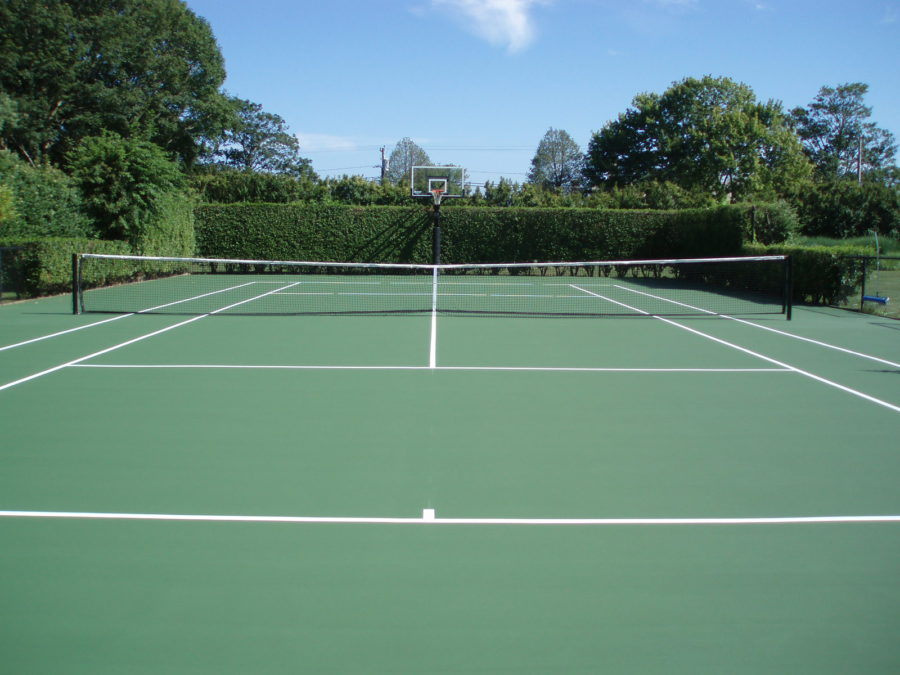The decision to build a tennis court on your property can increase the value of your home and make your yard more appealing to you and your loved ones, especially if you plan on using the court often. Whether you just started playing tennis, want to use tennis as a way to get in shape or be more physically active or have been playing for years, the tennis court can have a number of benefits.
Before building can begin, the site where you want the tennis court has to be evaluated and graded. There should be a buffer around the court site that is at least 5 feet. It’s important to landscape the area as well and to sterilize the soil so that plants won’t grow there and attempt to shoot through the tennis court material and crack the surface. The lowest point of the tennis court should be no less 6 inches. If possible, make sure there are no trees within about 10 feet of the tennis court site. If there are trees there or if you plan on planting more trees in your yard, it’s important to make sure that the trees are maintained regularly so that debris wont’ fall into the court and roots won’t change the shape of the tennis court.
After you’ve worked with a tennis court contractor to accomplish these tasks, it’s time to prepare the base stone. This stone is put in place to make sure that the court doesn’t sink or shift. The depth and thickness of the stone should be consistent to keep the court level and to make sure that the court has proper drainage so that water won’t collect on or below the surface. If you’re building the court on very stable ground, it may not be necessary to have a base stone installed. However, you should work closely with your contractor to determine whether this is necessary.
After you’ve determined if a base stone is necessary and the installation plans and processes have been set in place, it’s time for stone screening. This process helps to provide the surface of the tennis court with a reservoir so that the contractor can create a level base for the court. The materials that are used for screening should be able to hold moisture and stay compacted. If your tennis court will be made from clay, avoid materials like crushed shell or sand. Granite is usually the best screening material.
You should also talk to your tennis court contractor about additional features you want on the court that will make playing more practical and enjoyable. If you want to have benches built on one or both sides of the court, this should be taken into account when the entire court site is being measured and planned. It’s also important to make room for lighting that will be installed along the court, so that you can see without a glare if you want to play tennis later in the evening or during the early hours of the morning.

